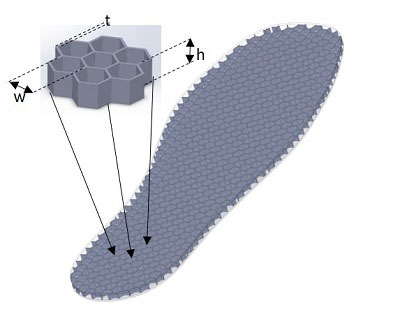
Establishing low-cost methods to help prevent foot ulcers will reduce the global socioeconomic burden of diabetes and ultimately save lives. Image courtesy of Staffordshire University.
Millions of people with diabetes are at risk of developing diabetic foot ulcers (DFUs), which often lead to amputations and other health complications. Now, scientists from the Staffordshire University Centre for Biomechanics and Rehabilitation Technologies (CRBT) in England have developed a new method to reliably detect this risk without the need for complex electronic in-shoe sensors.
“Routine overloading of the sole of the foot during daily activities can trigger the onset of foot ulcers, so being able to identify which areas in the sole of the foot are most affected is extremely important,” said Panagiotis Chatzistergos, PhD, associate professor in Orthopaedic Biomechanics.
A common method involves assessing plantar pressure to prescribe special footwear or insoles; however, many clinicians cannot use this because it is expensive and difficult to use. Chatzistergos and colleagues have developed a novel concept to address this problem by using 3D-printed flexible hexagonal thin-wall, tunable structures that will help clinicians better understand the cause of ulcer development and lead to improved patient outcomes.
“We have used a 3D-printed thin-wall structure that changes its properties when repeatedly loaded above or below a tunable threshold. We believe that this is a step change from current practice,” he said.
Patients would be required to wear the sensor insoles in their everyday footwear for a representative time period, for example a day or a week, before returning them for analysis. During the analysis of the sensor insole, plantar areas that were routinely subjected to higher pressures should be identifiable against those where pressure was below that threshold—the results of which could be potentially used in sensor insoles, as a screening tool for overloading, and to guide the prescription and design of custom-made therapeutic footwear and orthotics.





